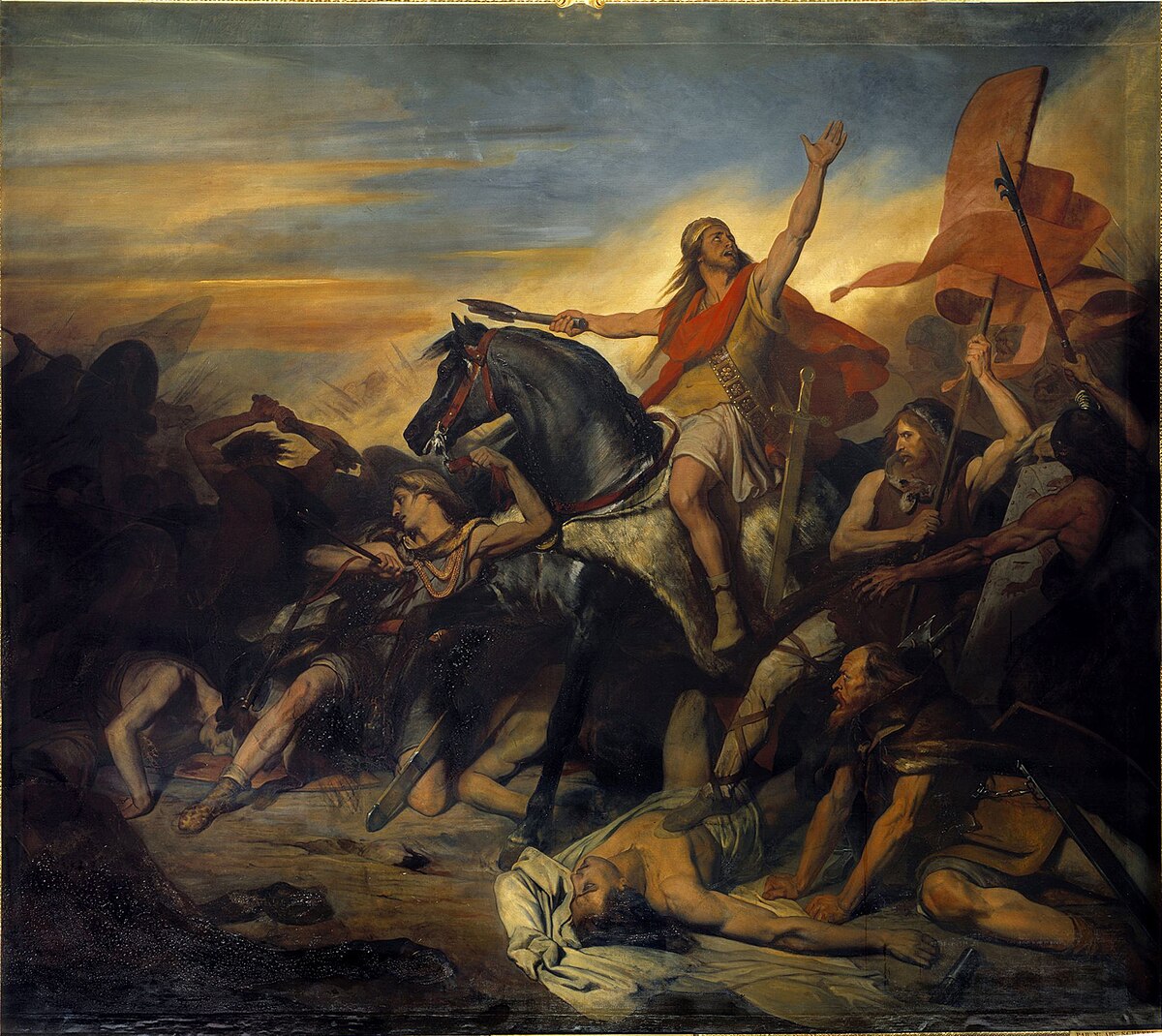
Franks
FranceThe Western Roman Empire fell in 476 with the deposition of Romulus Augustus by the Germanic foederati leader Odoacer, who became the first King of Italy. Afterwards, the Franks, like other post-Roman Western Europeans, emerged as a tribal confederacy in the Middle Rhine-Weser region, among the territory soon to be called Austrasia (the "eastern land"), the northeastern portion of the future Kingdom of the Merovingian Franks. As a whole, Austrasia comprised parts of present-day France, Germany, Belgium, Luxembourg and the Netherlands. Unlike the Alamanni to their south in Swabia, they absorbed large swaths of former Roman territory as they spread west into Gaul, beginning in 250. Clovis I of the Merovingian dynasty conquered northern Gaul in 486 and in the Battle of Tolbiac in 496 the Alemanni tribe in Swabia, which eventually became the Duchy of Swabia.
By 500, Clovis had united all the Frankish tribes, ruled all of Gaul and was proclaimed King of the Franks between 509 and 511. Clovis, unlike most Germanic rulers of the time, was baptized directly into Roman Catholicism instead of Arianism. His successors would cooperate closely with papal missionaries, among them Saint Boniface. After the death of Clovis in 511, his four sons partitioned his kingdom including Austrasia. Authority over Austrasia passed back and forth from autonomy to royal subjugation, as successive Merovingian kings alternately united and subdivided the Frankish lands.
The Merovingians placed the various regions of their Frankish Empire under the control of semi-autonomous dukes – either Franks or local rulers. While allowed to preserve their own legal systems, the conquered Germanic tribes were pressured to abandon the Arian Christian faith. In 718 Charles Martel waged war against the Saxons in support of the Neustrians. In 751 Pippin III, Mayor of the Palace under the Merovingian king, himself assumed the title of king and was anointed by the Church. Pope Stephen II bestowed him the hereditary title of Patricius Romanorum as protector of Rome and St. Peter in response to the Donation of Pepin, that guaranteed the sovereignty of the Papal States.
Charles the Great (who ruled the Franks from 774 to 814) launched a decades-long military campaign against the Franks' heathen rivals, the Saxons and the Avars. The campaigns and insurrections of the Saxon Wars lasted from 772 to 804. The Franks eventually overwhelmed the Saxons and Avars, forcibly converted the people to Christianity, and annexed their lands to the Carolingian Empire.
